
Page 12
http://threesology.org
Note: the contents of this page as well as those which precede and follow, must be read as a continuation and/or overlap in order that the continuity about a relationship to/with the typical dichotomous assignment of Artificial Intelligence (such as the usage of zeros and ones used in computer programming) as well as the dichotomous arrangement of the idea that one could possibly talk seriously about peace from a different perspective... will not be lost (such as war being frequently used to describe an absence of peace and vice-versa). However, if your mind is prone to being distracted by timed or untimed commercialization (such as that seen in various types of American-based television, radio, news media and magazine publishing... not to mention the average classroom which carries over into the everyday workplace), you may be unable to sustain prolonged exposures to divergent ideas about a singular topic without becoming confused, unless the information is provided in a very simplistic manner.
The DNA model is sometimes described in terms of a language and computational model:
| The unity of life At the cellular level of organization, the main chemical processes of all living matter are similar, if not identical. This is true for animals, plants, fungi, or bacteria; where variations occur (such as, for example, in the secretion of antibodies by some molds), the variant processes are but variations on common themes. Thus, all living matter is made up of large molecules called proteins, which provide support and coordinated movement, as well as storage and transport of small molecules, and, as catalysts, enable chemical reactions to take place rapidly and specifically under mild temperature, relatively low concentration, and neutral conditions (i.e., neither acidic nor basic). Proteins are assembled from some 20 amino acids, and, just as the 26 letters of the alphabet can be assembled in specific ways to form words of various lengths and meanings, so may tens or even hundreds of the 20 amino-acid “letters” be joined to form specific proteins. Moreover, those portions of protein molecules involved in performing similar functions in different organisms often comprise the same sequences of amino acids. There is the same unity among cells of all types in the manner in which living organisms preserve their individuality and transmit it to their offspring. For example, hereditary information is encoded in a specific sequence of bases that make up the DNA (deoxyribonucleic acid) molecule in the nucleus of each cell. Only four bases are used in synthesizing DNA: adenine, guanine, cytosine, and thymine. Just as the Morse Code consists of three simple signals—a dash, a dot, and a space—the precise arrangement of which suffices to convey coded messages, so the precise arrangement of the bases in DNA contains and conveys the information for the synthesis and assembly of cell components. Some primitive life-forms, however, use RNA (ribonucleic acid; a nucleic acid differing from DNA in containing the sugar ribose instead of the sugar deoxyribose and the base uracil instead of the base thymine) in place of DNA as a primary carrier of genetic information. The replication of the genetic material in these organisms must, however, pass through a DNA phase. With minor exceptions, the genetic code used by all living organisms is the same. Source: "Metabolism." Encyclopædia Britannica Ultimate Reference Suite, 2013. |
Thinking in a trinary as opposed to a binary perspective has begun to graduate beyond the simplistic religious and superstitious references from which an inference to numerology is frequently claimed by those whose perceptions cling to a dominant binary (analog) orientation. Early "Threesologists" were immersed in this world as well, and could not offer the distinction between analog (binary) and digital (trinary) representations. Insecurity often led early Threesologists to scramble for some area of protection from the assaults of others who accused them of dabbling in numerology or worse (such as black magic or witchcraft), by referring to the Christian Trinity. Later Threesologists began to use references from other subject areas, though many who observed the recurrence of "threes", often concealed their acknowledgment by keeping their appreciation to themselves or by giving a small sampling without offering the exploration of an idea that might assist others in trying to ascertain what is the influence(s) thereof. Early Threesologists go along with the dominant two-patterned oriented crowd and use accepted subject matter such as genetics or physics as a means of concealing an unrealized inclination towards a trinary perspective.
Another area of alternative computer programming design comes from the world of physics called quantum computing. Let's give a bit of history on the subject:
As early as 1959 the American physicist and Nobel laureate Richard Feynman noted that, as electronic components begin to reach microscopic scales, effects predicted by quantum mechanics occur—which, he suggested, might be exploited in the design of more powerful computers. In particular, quantum researchers hope to harness a phenomenon known as superposition. In the quantum mechanical world, objects do not necessarily have clearly defined states, as demonstrated by the famous experiment in which a single photon of light passing through a screen with two small slits will produce a wavelike interference pattern, or superposition of all available paths. (See wave-particle duality.) However, when one slit is closed—or a detector is used to determine which slit the photon passed through—the interference pattern disappears. In consequence, a quantum system “exists” in all possible states before a measurement “collapses” the system into one state. Harnessing this phenomenon in a computer promises to expand computational power greatly. A traditional digital computer employs binary digits, or bits, that can be in one of two states, represented as 0 and 1; thus, for example, a 4-bit computer register can hold any one of 16 (24) possible numbers. In contrast, a quantum bit (qubit) exists in a wavelike superposition of values from 0 to 1; thus, for example, a 4-qubit computer register can hold 16 different numbers simultaneously. In theory, a quantum computer can therefore operate on a great many values in parallel, so that a 30-qubit quantum computer would be comparable to a digital computer capable of performing 10 trillion floating-point operations per second (TFLOPS)—comparable to the speed of the fastest supercomputers. During the 1980s and '90s the theory of quantum computers advanced considerably beyond Feynman's early speculations. In 1985 David Deutsch of the University of Oxford described the construction of quantum logic gates for a universal quantum computer, and in 1994 Peter Shor of AT&T devised an algorithm to factor numbers with a quantum computer that would require as few as six qubits (although many more qubits would be necessary for factoring large numbers in a reasonable time). When a practical quantum computer is built, it will break current encryption schemes based on multiplying two large primes; in compensation, quantum mechanical effects offer a new method of secure communication known as quantum encryption. However, actually building a useful quantum computer has proved difficult. Although the potential of quantum computers is enormous, the requirements are equally stringent. A quantum computer must maintain coherence between its qubits (known as quantum entanglement) long enough to perform an algorithm; because of nearly inevitable interactions with the environment (decoherence), practical methods of detecting and correcting errors need to be devised; and, finally, since measuring a quantum system disturbs its state, reliable methods of extracting information must be developed. Source: "Quantum computer." Encyclopædia Britannica Ultimate Reference Suite, 2013. |
Once again, please note the reference to zero and one (0,1). This is equivalent to acknowledging the existence of a triplet code in DNA but become absorbed by the presence of base pairings. Hence, we see the emerging consciousness of a three-based functionality, but rely on old two-based orientations for establishing a comprehension thereof.
With respect to the word "pairings" in terms of a mental construct or structure, let me digress a moment and provide a bit of information about Lévi' Strauss's thoughts with his focus on cultural anthropology:
|
(Structuralism) in cultural anthropology, (is) the school of thought developed by the French anthropologist Claude Lévi-Strauss, in which cultures, viewed as systems, are analyzed in terms of the structural relations among their elements. According to Lévi-Strauss's theories, universal patterns in cultural systems are products of the invariant structure of the human mind. Structure, for Lévi-Strauss, referred exclusively to mental structure, although he found evidence of such structure in his far-ranging analyses of kinship, patterns in mythology, art, religion, ritual, and culinary traditions. The basic framework of Lévi-Strauss's theories was derived from the work of structural linguistics. From N.S. Trubetzkoy, the founder of structural linguistics, Lévi-Strauss developed his focus on unconscious infrastructure as well as an emphasis on the relationship between terms, rather than on terms as entities in themselves. From the work of Roman Jakobson, of the same school of linguistic thought, Lévi-Strauss adopted the so-called distinctive feature method of analysis, which postulates that an unconscious “metastructure” emerges through the human mental process of pairing opposites. In Lévi-Strauss's system the human mind is viewed as a repository of a great variety of natural material, from which it selects pairs of elements that can be combined to form diverse structures. Pairs of oppositions can be separated into singular elements for use in forming new oppositions. In analyzing kinship terminology and kinship systems, the accomplishment that first brought him to preeminence in anthropology, Lévi-Strauss suggested that the elementary structure, or unit of kinship, on which all systems are built is a set of four types of organically linked relationships: brother/sister, husband/wife, father/son, and mother's brother/sister's son. Lévi-Strauss stressed that the emphasis in structural analysis of kinship must be on human consciousness, not on objective ties of descent or consanguinity. For him, all forms of social life represent the operation of universal laws regulating the activities of the mind. His detractors argued that his theory could be neither tested nor proved and that his lack of interest in historical processes represented a fundamental oversight. Lévi-Strauss, however, believed that structural similarities underlie all cultures and that an analysis of the relationships among cultural units could provide insight into innate and universal principles of human thought. Source: "Structuralism." Encyclopædia Britannica Ultimate Reference Suite, 2013. |
Like so many of those working in computer language theory, they get entrapped by a two- a binary perspective that has not had the experience of a "Threesological" orientation... as described by the many three-patterned examples to be found in multiple subject areas. Whereas Lévi-Strauss saw the existence of binary relationships from a cultural anthropological perspective, he did not use this analytical model as a type of Swiss Army Knife:
(The Swiss Army Knife is a) multibladed pocketknife that evolved from knives issued to Swiss soldiers beginning in 1886. Although the knives were originally produced in Germany, Swiss cutler Karl Elsener began making soldiers' knives in 1891, equipping them with a blade, reamer, screwdriver, and can opener. The officer's knife, with a second blade and corkscrew, appeared in 1897. The knives continue to be supplied by two Swiss manufacturers, Victorinox (Elsener's firm) and Wenger, and both the military and civilian models bear the Swiss federal cross logo. There are hundreds of models of Swiss Army knives, which among their many tools may incorporate attachments such as a saw, pliers, scissors, compass, light, tweezers, whistle, fish scaler, file, pen, wirecutter, or altimeter. Models are especially designed for specific users—campers, hunters, computer repairers, golfers, and handymen. The name has become a metaphor for a compact, ingeniously designed tool with multiple uses. Source: "Swiss Army knife." Encyclopædia Britannica Ultimate Reference Suite, 2013. |
The usage of a binary perspective developed into a tool can be quite seductive with the existence of multiple, easy-to-find references that may lead some to overlook or disregard the presence of a three-pattern, and view it as a negligibility or anomaly. Whereas one may prefer a two-perspective and another prefer a three-perspective, still another may choose a two and three-perspective. Very often, however, one tends to rally around one camp of thought over another based on its membership adherents, if not measured by quantity, then quality... as one determines it.
Let us recap the two previous examples of alternative computing designs with a bit of history:
| Future CPU (Central Processing Unit) designs Since the early 1990s, researchers have discussed two speculative but intriguing new approaches to computation—quantum computing and molecular (DNA) computing. Each offers the prospect of highly parallel computation and a way around the approaching physical constraints to Moore's law. (Moore suggested that financial constraints would soon cause his law to break down, but it has been remarkably accurate for far longer than he first envisioned. It now appears that technical constraints may finally invalidate Moore's law, since sometime between 2010 and 2020 transistors would have to consist of only a few atoms each, at which point the laws of quantum physics imply that they would cease to function reliably.) 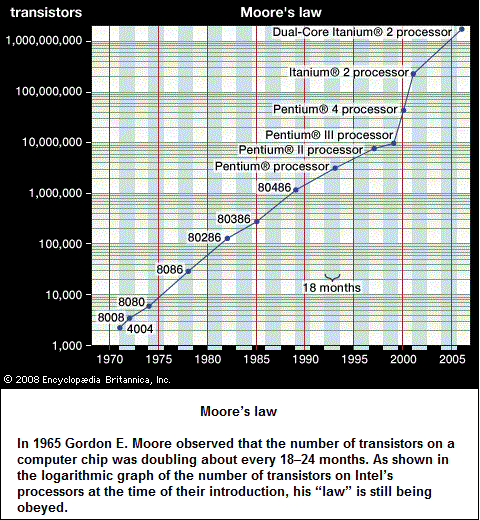 Quantum computing According to quantum mechanics, an electron has a binary (two-valued) property known as “spin.” This suggests another way of representing a bit of information. While single-particle information storage is attractive, it would be difficult to manipulate. The fundamental idea of quantum computing, however, depends on another feature of quantum mechanics: that atomic-scale particles are in a “super-position” of all their possible states until an observation, or measurement, “collapses” their various possible states into one actual state. This means that if a system of particles—known as quantum bits, or qubits—can be “entangled” together, all the possible combinations of their states can be simultaneously used to perform a computation, at least in theory. Indeed, while a few algorithms have been devised for quantum computing, building useful quantum computers has been more difficult. This is because the qubits must maintain their coherence (quantum entanglement) with one another while preventing decoherence (interaction with the external environment). As of 2000, the largest entangled system built contained only seven qubits. Molecular computingIn 1994 Leonard Adleman, a mathematician at the University of Southern California, demonstrated the first DNA computer by solving a simple example of what is known as the traveling salesman problem. A traveling salesman problem—or, more generally, certain types of network problems in graph theory—asks for a route (or the shortest route) that begins at a certain city, or “node,” and travels to each of the other nodes exactly once. Digital computers, and sufficiently persistent humans, can solve for small networks by simply listing all the possible routes and comparing them, but as the number of nodes increases, the number of possible routes grows exponentially and soon (beyond about 50 nodes) overwhelms the fastest supercomputer. While digital computers are generally constrained to performing calculations serially, Adleman realized that he could take advantage of DNA molecules to perform a “massively parallel” calculation. He began by selecting different nucleotide sequences to represent each city and every direct route between two cities. He then made trillions of copies of each of these nucleotide strands and mixed them in a test tube. In less than a second he had the answer, albeit along with some hundred trillion spurious answers. Using basic recombinant DNA laboratory techniques, Adleman then took one week to isolate the answer—culling first molecules that did not start and end with the proper cities (nucleotide sequences), then those that did not contain the proper number of cities, and finally those that did not contain each city exactly once. Although Adleman's network contained only seven nodes—an extremely trivial problem for digital computers—it was the first demonstration of the feasibility of DNA computing. Since then Erik Winfree, a computer scientist at the California Institute of Technology, has demonstrated that nonbiologic DNA variants (such as branched DNA) can be adapted to store and process information. DNA and quantum computing remain intriguing possibilities that, even if they prove impractical, may lead to further advances in the hardware of future computers. Source: "Computer." Encyclopædia Britannica Ultimate Reference Suite, 2013. |
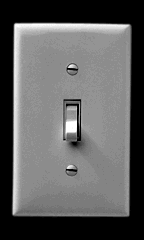
Computers are a tool. At present, let us say they are on the level of crude instruments such as using bones as clubs and stones found with edges, flat surfaces or hold some other value based on weight, color, transparency, etc... Those developing computer hardware or software, must present their tool to one or more others, as having some value... from which a larger enterprise may evolve. But not only are computers a tool upon which a tool maker may design in accordance with the shape of a body part or something in the environment such as an animals horn, teeth or claws used for intimidation, protection or predation; such tools may well incorporate a sense of the tool makers mood or environment. Hence, we can say... that is, by using such a comparison, that a tool may not only represent a particular environment, but the emotional and/or intellectual (mental) state of the tool maker. So when I claim that a computer is a box of switches, this description can be altered to describe the global or planetary environment and the overall mood or thought pattern of the prevailing species trying to use a tool as a projected image of their circumstances. Thus, the computer represent the environment in which a bi-polar orientation is being expressed, though it is called a binary code. And though some may prefer the denotation of ambivalence in describing the back and forth mental switching, the usage of the word "schizophrenia" may be interpreted in a negative way and prevent some readers from pursuing any further interest in the present discussion.

Whereas some may feel that an advancement in computer design is to be found in some biological or physics model, a psychoanalytical approach is not being routinely considered. It is not a convention to discuss the existence of a computer as an expression of a primitive mental state, much less mental illness. A computer represents the usage of an underlying (binary organized) mental and mood changes being replicated in an electrical environment enclosed in yet another (hardware) environment, which is itself in a third environment... wherever a computer is used... though one may want to include additional environmental settings like a series of Russian Nesting dolls. Whereas a binary switch is a plane with two poles, it is an illusion to think that a binary code can actually represent a three-dimensional cube. Whereas our eyes can pay witness to depth, the usage of a binary code does not provide us with the ability to accurately portray this. For example, if we look at the portrayals of figures by ancient Egyptians, we see the shoulders of figures turned towards the observer:
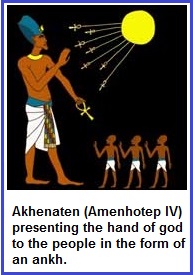 |
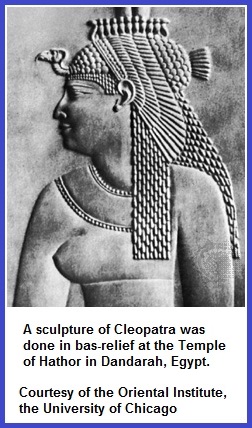 |
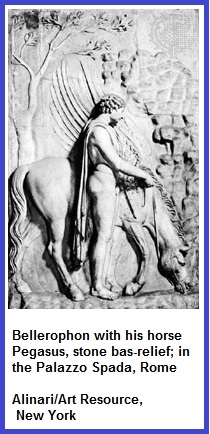 |
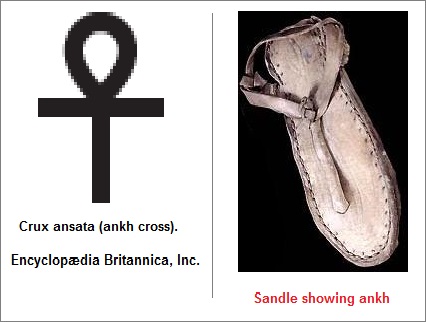 |
In the long history of the forms of symbolical expression a narrower (exclusive) and broader (inclusive) idea of what a symbol is has gradually evolved. This evolution is reflected in the various manners of symbolical expression that may influence and combine with one another. Many scholars question whether a picture or a verbal expression, for example, strictly corresponds to the idea of a symbol. Just as the ideology and terminology of the ancient Greek mystery (salvatory) religions distinguished between that which is shown and seen (deiknymenon), that which is done (dro-menon), and that which is said (legomenon), so also can one make distinctions among three types of symbols: the visual symbol, the symbolical action that is dramatically enacted in worship, and the linguistic symbol, which includes music and other sounds. Viewed in these various aspects, the complex character of the symbol becomes apparent. | |
|
Diagrammatic and emblematic Symbolic representations are usually depicted in diagrammatic or ideographic modes as signs, abbreviations, images, and objects of all kinds that indicate a larger context. In this category belong the simplified or abstract forms of objects of nature or other objects and geometrical forms, as well as colours, letters, and numbers. The circle, the disk, the rosette, or the swastika, for example, may symbolize the sun, the universe, or a star. The square and the cross may symbolize the Earth or the four cardinal points; the wreath, the labyrinth, the spiral, the plait, and the knot may indicate eternity, the flow of time, or a magical spell. Ornamental designs in local artwork, those of the American Indians, for example, frequently have a symbolical meaning and embody fundamental figures, such as the straight line, circle, rectangle, rhombus, or ellipse. The cross in its varying forms—the Latin cross, Tau (T), ankh, Saint Andrew's cross (X), and forked (Y)—may symbolize human beings and their extremities. Among various peoples and in different religions a number of basic colours have at times different and sometimes even opposite meanings. White, for example, may signify joy and festivity or death and sadness. Red has the most pronounced symbolical value: it refers to the liturgical, priestly sphere and also to life and death. In Christianity, colour symbolism is associated with the sacred year; in Buddhism with the picture of the universe, the regions of which are classified according to particular colours; and in the religion of the Maya of Mexico and Central America with the four world directions—east (red), north (white), west (black), and south (yellow). The symbolism of metals and precious stones also is related to their colours (e.g., emerald with green). The symbolism of the letters of the alphabet varies according to the alphabet (e.g., Α and Ω in Greek or A to Z in English) and is often connected with magic and prophecy—which is also true of the symbolism of numbers. In the picture writing of hieroglyphic systems and in the ideographic (idea-sign) writing of earlier times there is a direct relation between the word-sign and the object to which it refers. In alphabetic writing, numbers and letters are interchangeable if the letter has a number value, as, for example, in Greek and Hebrew alphabets. In some religions, the world of the gods is arranged according to a number system—e.g., into enneads (nines), triads (threes), or dyads (pairs). The idea of oneness was then extended to a numerically arranged pantheon. Gnosticism (a Hellenistic esoteric dualistic system) and Kabbala (a Jewish esoteric mystical system) developed number symbolisms. The letters received a symbolic character in two ways: first, as components of a word for which they stood—e.g., the Hebrew tetragram (four-letter) YHWH (Yahweh) for God, the Latin IOM for Jupiter Optimus Maximus (Jupiter the Best and Greatest), and the Greek IHS for Jesus—or, second through their numerical value, as in Α and Ω, the beginning and end of the Greek alphabet, signifying Christ. They then became means of abbreviation—signs possessing a specific content and meaning. Pictorial Pictorial symbolism in its many forms is a further development of nonrepresentational, ideographic symbolism and also, to some extent, its origin. In depicting the world of nature, pictorial symbolism captures and mediates the religious experience of reality. The picture shows plainly and clearly the rich and intricate connections of its symbolic content. It may present a part for a whole (a head, a hand, a foot, or an eye for a complete figure) or the whole itself. Symbolic expression of religious experience by means of painting has had a long history. Sculptural representations of the sacred or holy have their origin in cult. They range from Stone Age idols to the sacred sculpture of early Mesopotamian and Egyptian cultures, from the statues and reliefs of Greco-Roman gods, divinized heroes, and their deeds to the symbolic sculpture of India with its Hindu gods and demons, from the sacred sculpture of China and Japan with their respective pantheons to that of Mahayana (Greater Vehicle) Buddhism with its bodhisattvas (buddhas-to-be), saints, and spirits. These sacred figures, which may appear in statue or relief form, are sculpted out of various materials. The reliefs on the interiors and exteriors of temples have a decorative function similar to that of wall painting. They narrate a myth or tell a sacred history. Particular parts of the body and symbolical objects may also be sculpturally represented. For example, the hand of Sabazius, a Greek god sometimes identified with Dionysus (the god of wine), is portrayed as raised in blessing and encircled by a number of rather bizarre appendages. Also, representations of human limbs may be used as votive offerings for the cure of the part of the body represented. Representative symbolic sculpture tends either to simplify the figure in an abstract, geometrical, or expressionistic style or to imitate nature realistically. Source: "Religious symbolism and iconography." Encyclopædia Britannica Ultimate Reference Suite, 2013. | ||
The above article also discusses various other elements regarding symbolism in multiple other forms such as gestural and physical movements, time and space, verbal/auditory, musical, established icons and systems thereof, architecture, etc., as well as the conjunction and combination of one or another aspect. But my reason for introducing the topic of religion into the discussion is that the computer has become an icon, a type of religion with a specialized language taking place in dedicated sanctuaries relative to the code writers engaged in a type of secrecy like Leonarda Davinci who used mirror writing to conceal various notions or the "speaking in tongues" seen in some cults interpreted to mean a person has been influenced by a god or demon. For some, computers represent a type of religion, or a type of cult with attendant ideas, guestures, dress, places of meeting, and so on and so forth. Whereas participants thereof may not think of themselves engaged in a religious practice, their activities nonetheless express similar characteristics to the behaviors seen in the rituals carried out by religious practices. This is because human behavior has constraints.
There is a limited parameter in which human behavior can trace out the mode and manner of self-expression. That which we describe as "religious behavior", if stripped of its labeling, can be seen in various other human activities from sports, to politics, to baking and cooking or entertaining oneself. And because there is a limited parameter in which the human species can claim as its domain of physical travel... extended by way of artificial accompaniments (drugs, alcohol, planes, boats, diving gear, space craft, binoculars, telephones, etc...), the same underlying patterns crop up unless there is a change in the fundamental architecture of human biology influencing physiology. In other words, a recurrence of the binary, seen in the old good/bad dichotomy, continues to imbue its presence in multiple forms until some physiological change takes place which manifests a higher usage of a trinary orientation.
If we take the acceptance regarding the development of the human brain from a reptilian past to an old mammal brain followed by a new mammal brain, attributes of the brain may serve as a distinct means of exhibiting development along a one- two- three path, if we view the attributes of the brain as a means to identify these numerical indices as pointed out on the second page of this discussion: AI and 3sology pg2
The problem with expecting humanity to continue in its evolutionary development for eternity, is the same problem we are encountering in computer design. Namely, that the environment degrades. The hardware of a computer, like the hardware of the Earth, degrades over time. It can not be improved on no matter how much artificiality we apply to it and give us the illusion thereof. The degradation of an environment which influences the underlying software code, must be taken into account. Hence, an attempt to appreciate the circumstances under which the triplet coding system of DNA occurred, like the binary code of computers... as representative symbolic expressions of on-hand materials put to use; is of value— particularly if these circumstances are degrading and will effect the codes.
Whereas someone might say they would simply go buy a new computer with the latest upgrades in binary code, we humans can not go out an buy a new Earth with the upgraded changes in the genetic code. Do we actually see an upgraded genetic code taking place or an upgraded hardware design in our physiology? And though some binary aficionadoes might use the present of two hands, two, arms, two legs, two eyes, and two ears as a confirmation of a dominance to a binary arrangement, they obviously have not looked too deeply into human physiology, or else they would have come across the following list:
http://www.lumen.luc.edu/lumen/MedEd/GrossAnatomy/Threes.html The structure of the human body is organized into groups of three with remarkable frequency. I have listed several examples of this tendency by region. This list does not include structures contributing to form the many "triangles" in the body. General3 layers of skin: Epidermis- Dermis- Hypodermis 3 general venous circulations: Systemic- Pulmonary- Portal Embryology 3 germ layers: Endoderm- Mesoderm- Ectoderm 3 divisions of somites: Sclerotome- Dermatome- Myotome 3 definitive kidneys: Pronephros- Mesonephros- Metanephros 3 derivatives of skull: Desmo/dermatocranium- Splanchno/viscerocranium- Chondrocranium 3 initial embryonic divisions of the brain: Prosencephalon- Mesencephalon- Rhombencephalon Back 3 parts of the erector spinae m.: Iliocostalis- Longissimus- Spinalis (each are divided again into 3 parts) 3 parts of the transversospinalis m.: Semispinalis m.- Multifidus m.- Rotator m. 3 coverings of the spinal cord: Dura mater- Arachnoid- Pia 3 spaces surrounding spinal cord: Epidural- Subdural- Subarachnoid 3 borders of the scapula: Medial (vertebral)- Lateral- Superior 3 angles of the scapula Neck 3 parts of the axillary artery... 3rd part of axillary artery has 3 branches: Subscapular- Anterior humeral circumflex- Posterior humeral circumflex 3 Brachial plexus trunks: Upper- Middle- Lower 3 posterior Brachial plexus divisions 3 anterior Brachial plexus divisions) 3 Brachial plexus cords: (A) Lateral (B) Medial 3 branches off medial cord: Medial brachial- Medial antebrachial- Medial pectoral (C) Posterior 3 branches off posterior cord: Upper subscapular- Lower subscapular- Thoracodorsal 3 branches off the thyrocervical trunk: Transverse cervical- Suprascapular- Inferior thyroid 3 veins drain the thyroid gland:
3 scalene muscles: Anterior- Middle- Posterior 3 muscles attach to spine of C2:
3 constrictor muscles: Superior- Middle- Inferior 3 parts of the pharynx: Nasopharynx- Oropharynx- Laryngeopharynx 3 parts to the hyoid bone: Body- Greater horn- Lesser horn 3 structures inside carotid sheath: Common carotid artery- Internal jugular vein- Vagus nerve 3 ganglia in sympathetic cervical chain: Superior (magnum)- Middle- Inferior (stellate) Head 3 parts of the maxillary artery: Mandibular- Pterygoid- Pterygopalatine 3 divisions of the trigeminal nerve:
3 cranial fossae: Anterior- Middle- Posterior 3 nuchal (nape of the neck) lines: Inferior- Superior- Highest 3 layers to calvarium: Outer table- Diploe- Inner table 3 clinoid processes of the sphenoid bone: Anterior- Middle- Posterior 3 cranial nerves (C.N.) pass through jugular foramen: C.N. IX- C.N. X- C.N. XI 3 cranial nerves (C.N.) travel in the wall of the cavernous sinus: C.N. III- C.N. IV- C.N. V 3 cranial nerves (C.N.) carry parasympathetics to the head: C.N. III- C.N. VII- C.N. IX 3 nasal conchae: Superior- Middle- Inferior 3 principal components of the temporal bone: Squama- Petro/mastoid- Tympanic ring 3 bones of the upper jaw/palate: Premaxilla- Maxilla- Palatine 3 salivary glands: Parotid- Submaxillary- Sublingual 3 muscles innervated by 3 cranial nerves attach to the styloid process:
3 layers in tympanic membrane [eardrum] (derived from 3 germ layers) 3 cranial nerves innervate the external tympanum: C.N. V- C.N. VII- C.N. X 3 middle ear bones: Incus- Malleus- Stapes 3 parts of the ear: Outer- Middle- Inner 3 semicircular canals (of the ear) 3 membranes of the cochlea: Reissner- Tectorial- Basilar 3 intrinsic muscles of the tongue: Longitudinal- Vertical- Transverse 3 muscles elevate the mandible: Masseter m.- Temporalis m.- Medial pterygoid m. 3 branches of the posterior auricular artery:
3 branches of the ophthalmic nerve (VI): Nasociliary n.- Frontal n.- Lacrimal n. 3 superior alveolar nerves:
3 types of deciduous teeth: Incisors- Canine- Molars 3 layers of dentition: Enamal- Dentin- Pulp 3 general layers of the eye: Retinal- Choroidal/ciliary body- Scleral/corneal 3 color receptors in (eye) cone cells: Red- Blue- Yellow 3 nerves to the larynx:
3 cerebral arteries: Anterior- Middle- Posterior 3 arteries supply the cerebellum:
Shoulder 3 muscles attach to coracoid process: Coracobrachialis- Pectoralis minor- Short head of biceps 3 parts of the axillary artery... (3rd part has 3 branches):
3 muscles of the rotator cuff are rotators 3 glenohumeral ligaments: Superior- Middle- Inferior Arm 3 muscles in anterior compartment: Biceps brachii- Coracobrachialis- Brachialis 3 heads of triceps brachii m.: Long- Lateral- Medial 3 muscles attach to greater tubercle of the humerus: Supraspinatus- Infraspinatus- Teres minor 3 parts of the ulnar collateral ligament of the elbow: Anterior- Posterior- Oblique Forearm 3 muscles in deep anterior compartment:
Hand 3 muscles in thenar eminence:
3 muscles in hypothenar compartment:
3 phalanges in fingers: Proximal- Middle- Distal 3 palmer interossei Thorax 3 compartments: Mediastinum- Left pleural cavity- Right pleural cavity 3 branches off the aortic arch:
3 parts of the aorta: Ascending- Arch- Descending 3 principal surfaces of the pleura: Costal- Diaphragmatic- Mediastinal (the cupola is the superior extension) 3 lobes of the right lung: Superior- Middle- Inferior 3 bronchopulmonary segments of the upper right lobe: Apical- Posterior- Anterior 3 muscles of interthoracic wall:
3 false ribs on each side 3 cusps of the semilunar aortic and pulmonary valves of the heart 3 cusps of the tricuspid (heart) valve 3 main arteries of the heart: Circumflex- Anterior interventricular- Right coronary 3 splanchnic nerves: Greater- Lesser- Least Abdomen 3 folds in anterior abdominal wall:
3 muscles contribute to linea semilunaris/rectus abdominus aponeurosis:
3 openings in diaphragm: Aortic- Esophageal- Inferior vena cava 3 arcuate ligaments of diaphragm:
3 parts of the stomach: Fundus- Body- Pylorus 3 smooth muscle layers of the stomach: Oblique- Longitudinal- Circular 3 unpaired branches of the abdominal aorta:
3 branches of Celiac a.: Left gastric a.- Splenic a.- Common hepatic a. 3 branches of common hepatic a.: Right gastric a.- Proper hepatic a.- Gastroduodenal a. 3 arterial branches supply adrenal glands: Inferior phrenic- Aorta- Renal 3 structures lie within porta hepatis: Proper hepatic a.- Portal vein- Common bile duct 3 principal veins contribute to the portal vein:
3 parts of the small intestine: Duodenum- Jejunum- Ileum 3 parts of large intestine: Ascending- Transverse- Descending 3 tenia (band-like structure) of large intestine 3 coverings of the spermatic cord:
3 vessels in the umbilical cord: Umbilical vein and 2 umbilical arteries Pelvis and Perineum 3 bones in os coxae: Pubis- Ilium- Ischium 3 parts of the pubis: Body- Superior ramus- Inferior ramus 3 foramina in the pelvis:
3 gluteus muscles: Gluteus maximus- Gluteus medius- Gluteus minimus 3 rectal arteries:
3 branches of the posterior division of internal iliac artery:
3 openings in the urinary bladder: Left ureter- Right ureter- Urethra 3 parts of the urethra: Prostatic- Membranous- Spongy 3 parts of the uterus: Fundus- Body- Cervix 3 erectile compartments of the penis:
3 muscles in superficial perineal pouch:
3 arteries supply the rectum:
3 valves in the rectum: Superior- Middle- Inferior Gluteus 3 gluteal muscles: Gluteus maximus- Gluteus medius- Gluteus minimus 3 muscles innervated by superior gluteal n.:
Thigh 3 hamstring muscles: Biceps femoris- Semitendinosus- Semimembranosus 3 compartments in the femoral sheath 3 muscular compartments of the thigh: Anterior- Medial- Posterior 3 branches of the lateral femoral circumflex a.:
3 muscles contribute to the pes anserinus: Sartorius- Semitendinosus- Gracilis Leg 3 compartments in the leg... (3 muscles in anterior compartment:)
Foot 3 cuneiform bones: Medial- Intermediate- Lateral 3 phalanges in toes: Proximal- Middle- Distal 3 plantar interossei (related to the sole of the foot) Miscellaneous 3 exams in the course |
Yet the human body is but one of many types of biological structures... of biological sculptures created by the elements that have been on-hand in the environment. Like a sculptor or painter or writer whose tools may be crude and severely limited... like paint, paper, clay and writing instruments have been at one time or another. They did the best they could under the circumstances presented to them. And like many an old person whose environment degrades because they are not able to keep up with maintenance of a property or a person whose emotion or mental state incapacitates them to a degree where their circumstances overwhelm them... they adopt the necessary rationalizations to accommodate their situation. They frequently find excuses and rely on those and that which best helps to serve the expediency of their efforts under prevailing conditions.
Subject page first Originated (saved into a folder): Thursday, November 13, 2014... 5:50 AM
Page re-Originated: Sunday, 24-Jan-2016... 08:51 AM
Initial Posting: Saturday, 13-Feb-2016... 10:59 AM
Updated Posting: Sunday, 23-June-2019... 2:47 PM
Herb O. Buckland
herbobuckland@hotmail.com